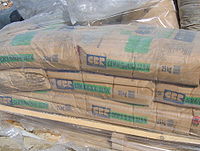
Photo from wikipedia
The novelty of the research consists in the fact that the decayed wood was taken from an old icon, on which several consolidation treatments were applied, and the improvement indices… Click to show full abstract
The novelty of the research consists in the fact that the decayed wood was taken from an old icon, on which several consolidation treatments were applied, and the improvement indices of the decayed wood (by Anobiidae insects) were also determined. This research investigated two types of the most used consolidant (Paraloid B72 10% and Regalrez 1126 25%) solubilized in three types of solvents, to improve the properties of lime wood samples coming from cultural heritage objects that presented different degrees of degradation. Testing methodology for dimensional changes and wood swelling due to solvents impregnation, retention of consolidant in the degraded Tilia cordata wood, and the effectiveness of the consolidation treatment by the Mark hardness method was extensively presented. The highest amount of consolidant was observed when using Regalrez solution, and the lowest amount of consolidant was determined for Paraloid B72 solubilized in acetone. As a general conclusion, the use of Paraloid B72 or Regalrez 1126 for the consolidation of old and degraded lime wood, regardless of the type of solubilizer, will lead to stabilization of the wood degraded properties and the life span of the heritage object.
Journal Title: BioResources
Year Published: 2023
Link to full text (if available)
Share on Social Media: Sign Up to like & get
recommendations!